Friday 21 June
This was a whole day out, picked up after breakfast
by two drivers and cars; one of the drivers was from yesterday and he was asked
to settle his driving down, having gone through stop signs, hands off the wheel
when he was talking, and generally not been very safe we felt.
His wife, driving our half of the group, was
excellent though the aircon wasn’t reaching the back so we had the side windows
open all the way as some didn’t feel too well on the bumpy roads.
We stopped first in Galatina, we all went first to
a church (possibly the cathedral but it’s a bit hard to tell, they are all
large and mostly extensively decorated) and I have to say that despite giving
the cathedral in Trani top marks with its simple white walls and stained dark
wooden ceiling, I was blown away in this one by the wall-to-wall-to-ceiling
frescoes. It was like looking at page
after page of an enormous illuminated manuscript with people doing everything
from making cement and carrying it on their backs up a ladder, to Templar knights,
to depictions of bible stories, and to men hiding in a corner listening to what
was happening in the next fresco where people were in some kind of
meeting. Beautiful. Most
had been restored but there were some small, original pieces if you looked hard
enough.
We were also able to go into the cloisters which
were simple, cream stone, but all around the walls were paintings depicting all
the things you should do in your lives such as abstinence (she had chicken legs
on a plate beside her), piety and so forth.
The paintings were very graphic, including one of a man with a nasty big
ulcer on his ankle, surrounded by people carrying bowls and looking
worried. I think that seeing all these
paintings of people in contemporary clothes and doing jobs common at the time,
is all part of the way the church illustrated bible stories but also how they
showed what bad things would happen to you if you didn’t live your life
properly (i.
e. give massive amounts of money to the church to help you up the
ladder to heaven?).
Second stop was at a seaside town, Otranto, with
the option of swimming during our three-hour stay but we decided to just
potter. We parked by the castle then walked down to
the church, this one is famous for the mosaics covering the whole of the floor,
in perfect condition and walking in you wanted to see it all but the central
part was roped off and had chairs set out in it. There were bible stories in mosaics (Cain
and Abel), animals (stags, and even two elephants right at the front
door). The church had been renovated
and a lot of the bling toned down or removed, but there were some side chapels
which were decorative. One of these had
three glass panels about 3m high and filled with alternating rows of skulls and
bones, skulls and bones. The crypt was
much more simple with many columns re-used from earlier times, some with
decorations etched into them such as a cross, and one with what looked like
garlands of flowers.
The main ceiling
was unusual in that it looked like very delicate ceramic bowls set into the
ceiling, a sort of blue-grey with gold and white, very striking. I suppose it was plasterwork, I liked it very
much.
We came out a low-down door onto a street leading
to the waterfront where Jacopo left us to our own devices. Some went swimming at a beach a few hundred
meters away, or paddled by the sea wall but we just wandered and eventually
ended up back at the castle so had a pizza lunch along the street and then went
into the castle to have a look. It was
built in 1480 after the Turkish invasion in memory of 500 martyrs killed at
that time and is the biggest in Puglia.
It’s another empty shell but is used as an exhibition centre and has
information boards in the ground floor rooms, one of which has a well-kept
fresco on the ceiling which you almost miss – not all of us look up when we go
into a room. The storyboards told the
history of the castle through the ages, quite a busy and bloody place.
Up the stairs was a main reception room with blocks
of carved stone removed from various parts of the castle, and with stairs
leading to the dungeon (guided tours only).
Up another level the roof gave good views out to the marina and to the
sea, and two more sets of stairs led to a lookout point though they were
blocked off, that would have been quite a sight from there. I stayed on the second level and had a look
at an exhibition of Modigliani’s paintings of women and stories about his
sitters, or muses you could say. Many
nudes. It’s there to mark the 100th
anniversary of his death, the pictures are photographic reproductions but it
was worth a look.
They also had several rooms showcasing the Grotta
de Cervi which is in this part of Puglia, prehistoric caves discovered by a
group of men several years ago. They
explored and found cave paintings dating back at least to 12000 BC, as well as
many artefacts such as arrowheads and pottery.
The caves are closed now except for research and special reasons because
the paintings were being damaged, but there were lots of photos and
explanations of the symbols; the man shooting an arrow found etched into a
piece of pottery is something of an icon in the exhibit. Andrea at the museum told us that by
rights the men who discovered the cave should be entitled to a large Government
reward and they have been fighting for it, but they too have been shafted and
have got nothing.
On the way back to Lecce we stopped at a lake which
I think was created by a bauxite mine, and when it rains all the minerals leach
down from the lakesides and turn the water purple. It’s well known for its reeds and ducks in
the lake I think, and the soil is very orange so must be mineral-rich. The heat had pretty much defeated me by then
and it was all I could do to walk down the dirt track and back – hard to be
enthusiastic unfortunately.
Back at the hotel we had a couple of hours to relax
and cool down, then just after 7 walked to the main city gates where we met Pat
from the tour group and she joined us for dinner. It was lovely just wandering through the
little lanes at that time, cooler temperature, the eating places were setting
up outside for dinner and it was all very relaxed. We were having a look around when we came
upon all but one of the tour group (one had stayed back to catch up on sleep),
they’d gone to the restaurant in two groups after shopping and wandering, and
liked the look of the place so stayed on their recommendation.
It was a nice setting too with a big church
across the road, a park on the other side so it was quite cool, and we could
see the wedding party when they came out.
It must be the wedding season in Puglia as we’ve seen several on our
travels. Patricia bought a very nice
silver and turquoise necklace from this gentleman, and I bought a red wooden
necklace. She had fun bargaining him
down from 40 Euro to 15, and he whipped out his cigarette lighter to prove the
turquoise beads weren’t just lumps of plastic.
We had an excellent meal though Pete was defeated by the size of his
mixed grill; he managed several hundred grams of steak, lamb, pork, meat balls,
but could barely put a dent in his fries.
Yes, he rolled back to the hotel and slept like a baby after that
effort. Definitely no gelato on his way
home.
- Temperatures – I’m sure the published temperatures are read somewhere on top of a fairly high building with a breeze around it, definitely NOT at street level where you are surrounded by narrow light-coloured walls and cream paving stones which all absorb and then push out the hot air onto anyone on the street. There must be a 4 – 5 degree difference I think.
- Tourist tat was definitely not as attractive in Trani or Lecce, quite tacky in some respects and nowhere near as bright and appealing as all the yellow and blue pottery and textiles in Amalfi. I think things were cheaper though, same with food – not so many tourists so not the ability to rack up prices sky high.
- Dates on buildings – I’m not sure if I’ve said before but I think all buildings should have a date stone on them, they could be 200 or 500 years old and you can’t tell. I just marvel at anything more than 200 years old that is being used and lived in and isn’t a museum, just day-to-day life.

 Province of Lecce, Apulia, Italy
Province of Lecce, Apulia, Italy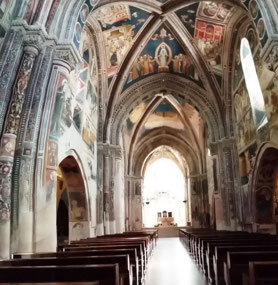
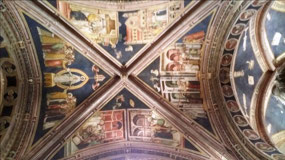
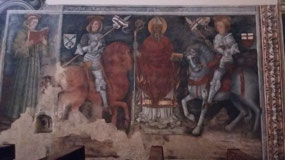
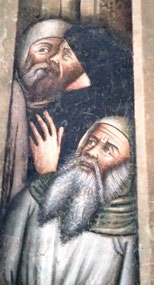
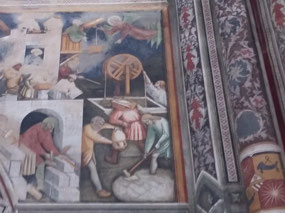
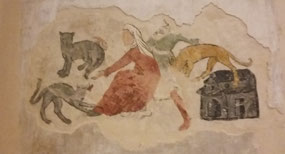









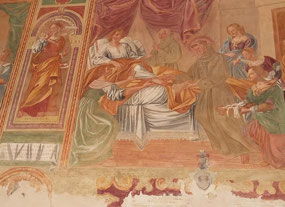
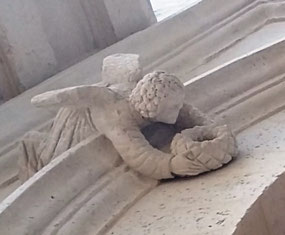
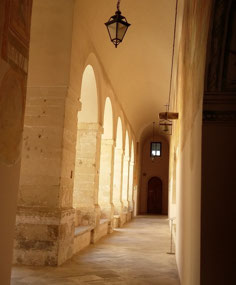
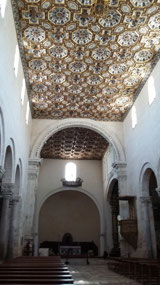
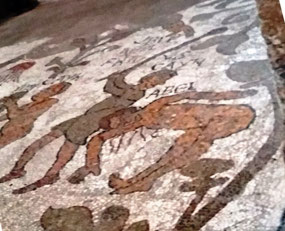
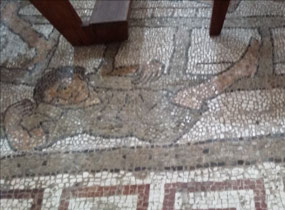
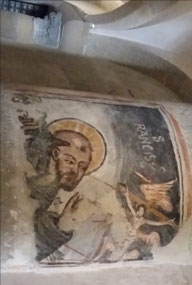
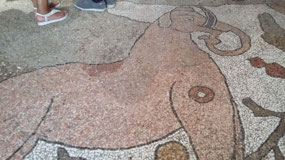
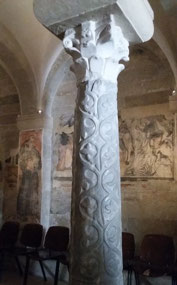
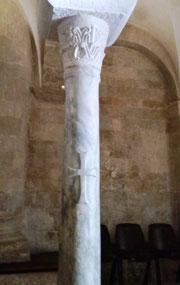
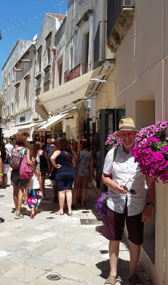
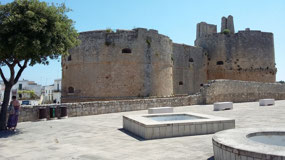
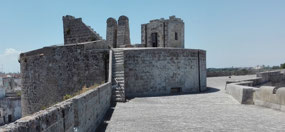
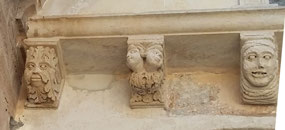
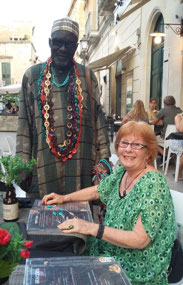
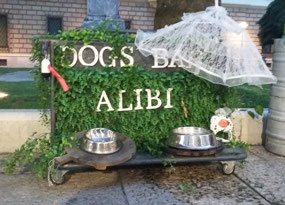
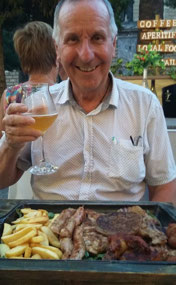

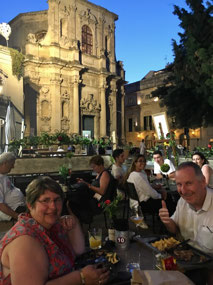
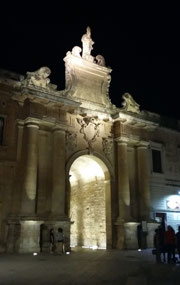
2025-05-23